CARRIE PATTERSON: field guide
















































 CARRIE PATTERSON: to
CARRIE PATTERSON: to
This field guide was created to accompany the exhibition
“Carrie Patterson: Sight to Site” first on view at the Boyden Gallery at St. Mary’s College of Maryland from January 17-March 17, 2023.




Gallery staff: Joe Lucchesi, Ph.D., Boyden Gallery Director




Katia Meisinger, Boyden Gallery Manager
Guest Curator: Erin Peters, Ph.D., Assistant Professor of Art History & Visual Culture, Appalachian State University

Graphic design: Jim Gallagher, Drama Queen Graphics LLC
Photography: Gregory Staley
Contract installation: Selwyn Ramp
All dimensions are recorded in inches and are oriented width x height x depth.










































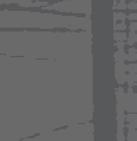














































































































Printed in the United States.
Thiseld guide is a collaboration of a curator (myself), the artist, designer, and you as the person taking this journey with us. As you roam and ramble through Carrie Patterson’s artwork in “Sight to Site,” take note of the artist’s methods and processes. Each of the six short sections are designed to emulate Patterson’s processual paths, draw connections across her bodies of work, and to place you in her shoes as she observes the visible and the inferred through repeated measurement and memory.
Relish and revel in your experiences here. Use the guide as a reference and a canvas awaiting your creation. You are encouraged to interact in multiple places in this guide: traverse connections and cross paths to make your own meaning. Read our notes in the margins and add your own. Collect and collage parts of the process to engage in how landscapes evolve from sight to site in Carrie Patterson’s art.
Erin Peters, Ph.D., Guest CuratorJANUARY 2023


























I combine abstraction with observation using forms found in vernacular architecture and the landscape such as billboards, signs, fields, water, and barns as source material. Through a slow process of mining a site for information, I draw on location, remembering specifics about each place by measuring distance and creating the illusion of light in each visual expression. I maintain a practice, often incorporating memories of observed landscapes into my paintings and isolating color events or single gestural marks. I approach each canvas or surface seeking an equivalence to the beauty found between the far away spaces and the details. The experience I want to translate is often invisible, a continuous flux between what is seen and what is known. In my current body of work, I use my own sketches, and color notes collected over twenty years to create new visual objects that reference a collected landscape and my stored visual memory.
Carrie Patterson (American, born Tokyo, Japan) has for over twenty years developed a daily perceptual painting practice that engages her mind and body by creating geometric paintings that embody a poetic, physical translation of space. She earned a BFA in studio art from James Madison University and a MFA in painting from The University of Pennsylvania, and was a student resident at the New York Studio School where she worked with second generation abstract expressionists Charles Cajori, Mercedes Matter and Rosemarie Beck. Her work has been exhibited nationally, with solo exhibitions at The Painting Center (New York, NY), Mary Baldwin University (Staunton, VA), Southwest Minnesota State University Art Museum (Marshall, MN), Susan Randolph (New York, NY), AxD Gallery (Philadelphia, PA), and University of Maryland College at the Federal Courthouse (Greenbelt, MD). Her work has been included in exhibitions at Kathryn Markel Fine Art (New York, NY), The Painting Center (New York, NY), The New York Studio School (New York, NY), C2 Fine Art (St. Petersburg, FL), WPA Select at the Katzen Art Center, American University (Washington, DC) and the Sherman Gallery at Boston University (Boston, MA). Her work has been written about in The Washington Post, City Arts New York Press, Abstract Art Online, Geoform Abstract Art, and The Philadelphia Inquirer. Patterson was elected to membership at The Painting Center and served for many years on the Executive Board. A longstanding advocate for the arts, Carrie has served on the Board of the St. Mary’s County Arts Council, volunteers her time and expertise to many arts organizations, and has authored “How to See for“ The Great Courses, The Teaching Company. In 2021, Patterson was awarded an Individual Artist Award from the Maryland State Arts Council. She currently serves as the Steven Muller Distinguished Professor of the Arts at St. Mary’s College of Maryland where she is a tenured professor of art and chair of the Department of Art.

I create geometric painted objects that embody a poe c physical transla on of place.
The experience I want to translate is o en invisible, a con nuous ux be een what is seen and what is known.
Rememory

Oil on linen / 60x60x3 / 2006

Compare the dimensionali of stacking color blocks in 2D paint and in 3D materials in Threadstack nos. 4,1,5, and 3 (on pages 32-33.)

notes - sketches








Mistaken Identity no.8

Printing ink on watercolor paper / 10x10x1.5 (unframed) / 2004-2014
Mistaken Identity no.5

Printing ink on watercolor paper / 10x10x1.5 (unframed) / 2004-2014
Mistaken Identity no.4
Printing ink on watercolor paper / 10x10x1.5 (unframed) / 2004-2014
Mistaken Identity no.7
Printing ink on watercolor paper / 10x10x1.5 (unframed) / 2004-2014









































































When first coming to a new place, even for a short time, we seek to familiarize the foreign. Especially if we stay to live in the place, we take part in an active cycle of recreation in seeing and being. Layered memory, or Rememory, gives context particularly to those places that become home. Seasons bring new life when we return again and again; what appears to be dormant or in decay feeds the next part of the cycle. Here, we dig deep to survey for points of reference of past and future presence.





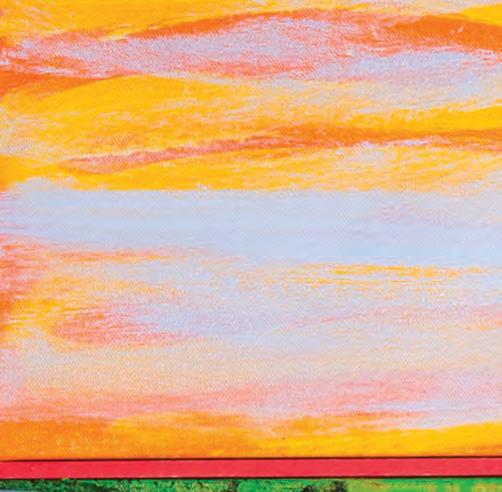


Total Station no.9
Acrylic, oil on wood and canvas / 40x50x3 / 2019

This pain ng translates the site of Mulberry Fields, on the Na onal Register of Historic Places No. 73002169. What other ar orks in the exhibi on reference a historic place?


notes - sketches









Imagine you are wandering through the grasses and rosemallows at water’s edge. You see just from the corner of your eye a flash of lime green surrounded by liquid reflections, tiny grains of sand, and smooth pebbles. Like the osprey, your gaze is completely fixed on the color as a target. In your sight, the color becomes the center of a composition, the first determining component in the landscape. While some may see the bottle cap as out of place, in the strength of your Mistaken Identity, you see it as a natural imprint, as much part of the place as the smooth pebbles.










Acrylic and enamel with children’s blocks on linen and wood / 22.5x7x2 / 2009









Envision the thin materials of St. Francis

Xavier stack no. 1 like layers of skin - how would you describe your own place in the world as layers of skin?

St. Francis Xavier stack 1


Watercolor paper, acrylic, glue, cold wax / 26x8 / 2008




You are walking fast along a metal fence and the rungs blur by in tangy and segmented repe on. You stop. Your body tilts forward slightly as your legs and heart are still in forward motion. You see the rungs of the fence as hyper-real and larger than life - they both sway and stand still at the same time, like Lightbox stack no. 1-4, compiling senses of sight and measured distances into shifting markers of space and time. It is as much the physical movement as the memories of sight, sound, and smell that prompt you to translate the experience.












Historic structure shift no.1














Collagraph / 22x22 / 2012
Historic structure shift no.3


Collagraph / 22x22 / 2012




Historic structure shift no.2
Collagraph / 22x22 / 2012
What kind of markers do you see in









Historic structure shi nos. 1,3, and 2?
Mile markers? Grave markers?

Oil rigs on the horizon? Piano keys? A bridge?
notes - sketches





The translation is complex: you are building senses as blocks of experience, both exact and conflicting in line, shape, and color. The juxtaposition of form can be mechanical and measured in composition, while texture creates ambiguity. These qualities aid in your effort to observe architectural space as both visualized by you and inhabited by others. By selecting and aming the built environment you view the landscape as more than what is visible, promoting possibilities of life as measured and messy through lively gestures like in Blinktracking no. 4 and no. 6. You see that it is necessary to negotiate truths with changing contexts of circumstance.






Sign Series 3 no.2
Oil, acrylic, and enamel on wood and canvas / 25x20 x2.75 / 2011
Close your eyes almost completely un l you can see just a ny bit. What strikes you as di erent about










Sign Series 3 no. 2 and no. 1?
Sign Series 3 no.1
Oil, acrylic, and enamel on wood and canvas / 25x20 x2.75 / 2011








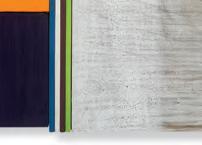
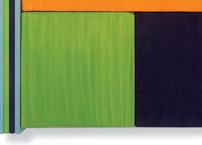




Threadstack no.4






Acrylic, ink, and cold wax on found paper 10x7x3 (unframed) / 2018
Threadstack no.5



Acrylic, ink, and cold wax on found paper 10x8x3 (unframed) / 2018
Threadstack no.1






















Acrylic, ink, and cold wax on found paper 10x7x3 (unframed) / 2018
Threadstack no.3

Acrylic, ink, and cold wax on found paper 10x7x3 (unframed) / 2018

























In the process of creating a semblance of something new from long observation, you work with physical and symbolic beliefs - these are your own expectations as well as those of others. Envision your perceived purpose of a chapel or other sacred space. Does this purpose include an object, or a litany, a missive or book, which guides parishioners and pilgrims (like yourself)? If missing, is this an expectation to be remedied in the new creation from your repeat visits? By taking a physical remnant like a piece of wood from that chapel or from a building nearby like those in Chapel HSMC no. 2 and Historic Beats no. 8, you weave the tapestry of understanding of the place as a site laden with meaning and metaphor, some layered through your own mind and memory.






Chapel HSMC 2
Enamel, acrylic, oil on canvas, linen, and wood / 28x14x2 / 2009




















Count the number of mes you see the colors used in Historic Beats no. 8 in the ar orks in the exhibi on.

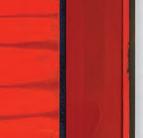



Historic Beats no.8
Oil, acrylic, and enamel on wood and canvas / 18x20x2.5 / 2011
As you translate the meaning of site(s), there is transilience in placeand presence. Place is observable in consciousness - at times tangible, and at times metaphorical. Presence is the meaning beyond recognizable planes of existence heightened by moments fixed in memory and fluid in the mind’s eye. Here, the presence of Eastern White Pines as great, soaring, swaying sentries remind you of the comparatively squat and stable umbrella pines that keep watch in Italy. In memory, these trees merge - like their times and places - and open new avenues of experience, as in Barely a trace no. 1-20.


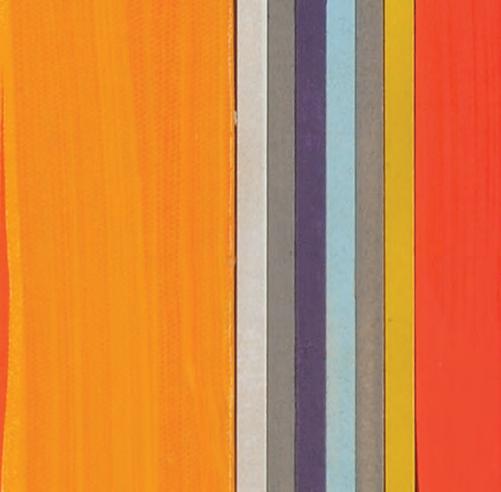


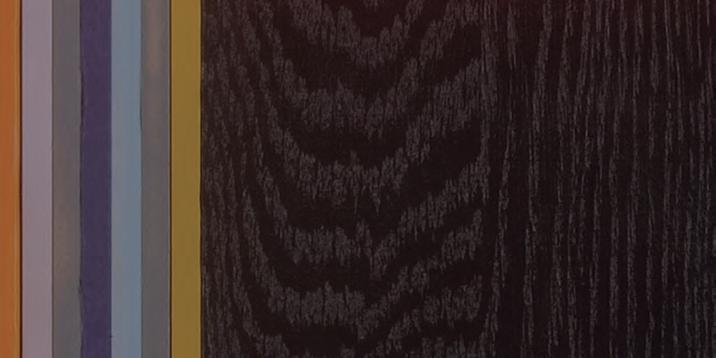


Historic Beats no.5



Oil, acrylic, and enamel on wood and canvas / 26x16x3 / 2011
The patterns in the wood are similar to the ar st’s brushstrokes in Blinktracking no. 3. How do their shapes compare?











Historic Beats no.7



Oil, acrylic, and enamel on wood and canvas / 26x16x3 / 2011












What my mind remembers as truth
The quote that forms the tle of this essay demonstrates Carrie Patterson’s understanding and nurturing of uidi in par ering with places, people, and circumstances that are formed by human and non-human agents and actors.
The gradual process of decay of wood in a billboard sign allows the natural environment to penetrate and participate and becomes the landscape for the artist. The sight of human detritus becomes the natural focal point of a composition that places the artist in the center of a collaboration and calibration of forces, which she is intrinsically a part of, but does not control. The physical production of artworks is syncopated by the rhythms of being a mother with new children. Timing here is crucial, as with the cryptic clock of memory, which can forget and recreate whole new experiences. By compiling and creating stuff such as this, Patterson brings into being powerful artworks that are always in process and in dialogue with multiple dimensions.
Patterson’s ar s c process is inherently individual and completely collabora ve.
This dichotomy – or opposite ends of the spectrum – is infused into the artist’s practice and production. In many ways, finding inspiration in the flux between extremes to create meaning in the middle is a defining feature of Patterson’s work. By seeking the middle - the margins - the everyday, Patterson makes a bold commitment to reveal and uncover absences left out of (or barred) from the canonical, accepted, dominant narrative.
In doing so, Carrie Patterson raises issues of societal (im)balance, (in)justice, and (anti)canon/norm with the continuous building of lived experience as creative motive over the singular view or the extraordinary occurrence. Patterson builds an artistic archive of experience of many moments, repeated returns to the same place, and compilations of the tangible record of sketches, color notes, physical remains, and memory.
Patterson pairs a sophis cated reliance on and rejec on of trained principles of landscape pain ng to bend and stretch the parameters of senses at the core of her work.
As much as the discerning eye begins the process with sight, a need for knowing a place ignites artistic inquiry. Sketches, photographs, and notes in the moment inform the larger process of translation that integrates known pasts with multiple interpretations of the present. These can be inferred and imagined, and also come from detailed and measured studies. The artist’s process here can be compared to a scientist in the field with data categories such as time, movement, and memory.
Just as the artist melds and molds the process of rigorous documentation in preparatory research, there is equal measure of calculated experimentation in medium. The range extends beyond the canvas to incorporate a plethora of materials for which a number of finished artworks are aptly called “constructions.” Even those artworks that are considered ‘paintings’ fuse multiple methods and materials, especially found objects associated with the places investigated.
In all, the expanse of physical and immaterial elements make Patterson’s ar orks sculptures of memory, or more t ngly, sculptures of the ar st’s mind’s eye.
There is a celebration that the fleeting feeling is equal to the enduring edifice; the compiled artistic archive of experience is akin to the artistic statement.
Patterson incomparably combines depth of participation and the production of presence.


























(bearing no relation to the original) no.2
Painted construction with wood, canvas and found objects / 21x18x7 / 2021
(bearing no relation to the original) no.4


Painted construction with wood, canvas and found objects / 20x17x6 / 2021




















From the Heap (bearing no relation to the original) no.3

/ 2021

Do the blocks here look similar or di erent om those in the Mistaken Iden series? How so?








notes - sketches


 Painted construction with wood, canvas and found objects / 13x16x4.5
Painted construction with wood, canvas and found objects / 13x16x4.5
From
(bearing no relation to the original) no.5


Painted construction with wood, canvas and found objects / 28x20x4 / 2021
From








(bearing no relation to the original) no.1


Painted construction with wood, canvas and found objects / 28x20x6 / 2021







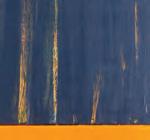



















 Lightbox Stack no.2
Acrylic paint with cold wax on cardboard / 12x12x22 / 2016
Lightbox Stack no.1
Lightbox Stack no.2
Acrylic paint with cold wax on cardboard / 12x12x22 / 2016
Lightbox Stack no.1
Blinktracking no.7








Watercolor paper, acrylic, cold wax / 31x52 / 2020







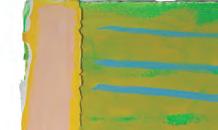












Blinktracking no.5
Watercolor paper, acrylic, cold wax / 31x44 / 2020
Blinktracking no.4







Watercolor paper, acrylic, cold wax / 31x52 / 2020




Blinktracking no.6

Watercolor paper, acrylic, cold wax / 31x55 / 2020

















Blinktracking no.3
Oil on canvas and wood / 70x50x3 / 2020








Look at Lightbox stack no. 3 om the side - do you see similar patterns in Blinktracking no. 3?






notes - sketches























































































































































































































































































































































































































































































































































































This exhibition and catalog were realized primarily because of the enormous inventiveness and enthusiasm of its creative team: Dr. Erin Peters, guest curator, assistant professor of art history at Appalachian State University, and former director of the Boyden Gallery, Jim Gallagher of Drama Queen Graphics, Boyden Gallery manager Katia Meisinger, installer Selwyn Ramp and, of course, Steven Muller Distinguished Professor in the Arts Carrie Patterson.
We are especially grateful for resource and financial support from many campus offices and individuals in bringing this project to fruition, especially Dr. Katie Gantz, vice president for academic affairs and dean of faculty, as well as the Office of Research and Sponsored Projects, and the Office of Advancement, with special acknowledgement to Lee Capristo, director of writing and content. For their work maintaining other aspects of gallery operations during this project, we would like to acknowledge collections manager Emily Smith, Daniel Mixson, and our student staff: Emma Bradshaw, Melissa Martinez, James Quinn, and Katherine thor Straten.
The exhibition is also made possible through the support of the Arts Alliance of St. Mary’s College of Maryland and the Maryland State Arts Council.




























































































































Dr. Steven Muller served on the College’s Board of Trustees for 14 years, chairing the board from 1994-2003. In 2000, he established two endowed professorships, to recognize faculty accomplishments in the sciences and in the arts. The Muller Distinguished Professorships continue to foster excellent scholarly and creative work among our faculty. In honoring his generosity, we are so pleased that Dr. Jill McGovern, wife of the late Dr. Muller, has carried on this legacy by continuing to give to the professorships fund.
— Dr. Joe Lucchesi, Director































